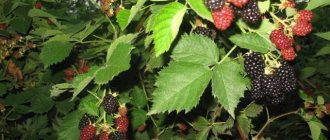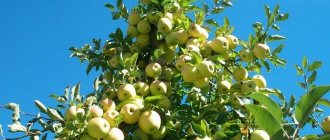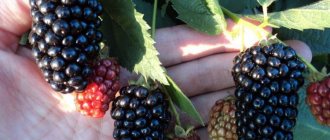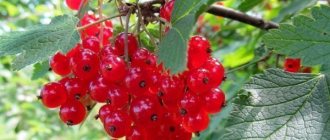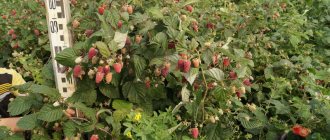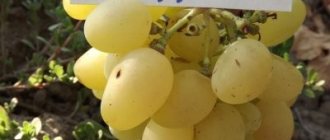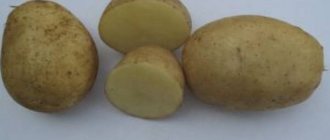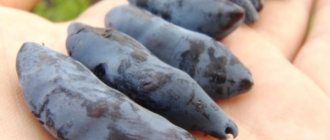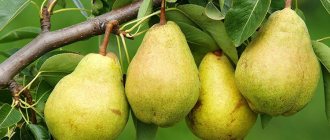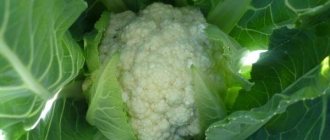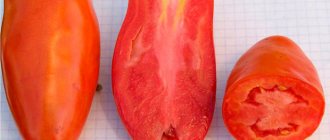Thornless evergreen blackberries are not as popular among Russian gardeners as raspberries or currants, but they still rank high in the ranking of crops for growing in garden plots. It contains as many useful substances, and maybe even more, as other berry plants. Since the new Thornless Evergreen blackberry varieties do not have thorns, this crop attracts the attention of gardeners to cultivate on their plots, because caring for the bush and collecting the fruits will be very easy and comfortable.
A brief excursion into history
Thornless Evergreen Blackberry was first brought from European to American territory at the beginning of the twentieth century. Under the influence of the new climate, blackberry mutations began. When mutation occurred under natural conditions, some varieties began to grow thornless shoots. Breeders from America drew attention to this phenomenon; in 1926, blackberries were registered under the name Thornless Evergreen. This variety began to be successfully imported, and it became popular in Latin American countries (Mexico, Argentina, Peru), on European territory (in Great Britain), on the Eurasian continent (in Russia, Ukraine).
Pros and cons of the variety
Disadvantages include late ripening - from mid-August to mid-September. Not everyone is satisfied with its low yield in the first years. Full fruiting occurs at the age of 3-5 years.
The advantages of Thornless Evergreen include:
- the variety is not aggressive, the bushes do not spread, since there are no root shoots;
- stable yield;
- frost resistance;
- transportability;
- extended fruiting;
- decorativeness;
- versatility of use.
Blackberry Thornless Evergreen: variety description and characteristics
Blackberry Thornless Evergreen: photo of thornless evergreen variety
Blackberries, growing in the wild, were previously cultivated in most countries as a garden berry plant. But due to the fact that it was inconvenient to care for it and collect fruits due to its sharp and powerful thorns, a large number of gardeners refused to grow it. Thanks to the thornless clones, evergreen blackberries have regained their reputation.
All clonal varieties of Thornless blackberries can produce root growth with thorns.
General characteristics.
Thornless blackberries are a series of varieties that includes more than 100 forms, differing in appearance, size and taste of the fruit, yield indicator, and ease of cultivation. But they have one common characteristic feature - they all do not have thorns. There are other identical features that unite all forms.
Short description.
- The root system is strong, powerful, penetrates one and a half to two meters deep into the soil, but does not produce offspring to propagate the bush.
- The shoots first grow vertically, have five sides, over time they become arched towards the ground and possibly root with the apical part, when they come into contact with the ground, they grow for two years, grow up to two to four meters, the vines that have produced fruits dry out and need to be cut out.
- The leaves are trifoliate, dark green in color, their edges are lacy and carved, they do not fall off, and they endure the winter season on shoots.
- The fruit is a multi-nut of medium or large size (four to fourteen grams), resembles a thimble, green in color in the first days of the growing season, then turns red when fully ripe, turns black, tastes sweet or sweet-sour.
Short description
Late variety Thornless Evergreen. Flowering continues from June to July. Harvest from mid-August to mid-late September.
In what areas is it recommended to plant?
The Thornless Evergreen variety is not included in the State Register, so there are no exact recommendations for growing regions. In a cover culture, this variety of blackberry can be grown in the middle zone. The variety is in the collections of amateur gardeners in Bashkiria, Mordovia, Orenburg, Moscow, and Volgograd regions.
Resistance to frost and drought
The variety can withstand frosts ranging from -20 to -29 °C. In regions where the snow cover is stable and falls early, the crop overwinters well under a small shelter. The blackberry root system is powerful, so it can tolerate short-term drought. With drip irrigation, the variety is grown in dry areas of Texas.
For the Russian central zone, 1 watering per week (20 l) is sufficient, provided the tree trunk circle is mulched.
Susceptibility to diseases and insects
To maintain the health of the bush, one early spring treatment with a copper-containing preparation is sufficient. The variety has stable immunity. Preventive measures come down to sanitary pruning and maintaining the cleanliness of the tree trunk circle.
Reproduction methods
A novice gardener should purchase a seedling with a closed root system. This is the most reliable option for propagating blackberries. If there is an adult Thornless Evergreen bush in the garden, then the variety can be propagated in 2 ways:
- green cuttings;
- apical layering.
Productivity
The yield of a bush depends on the agrotechnical background. During the first 3 years, few fruits are formed. From the 4th-5th year, 10 kg or more are collected from the bush. The yield of mature blackberries is stable.
Taste and use of fruits
At the stage of technical ripeness, the taste of the berries has a pronounced sourness. When ripe it goes away. The pulp of the ripe berry is juicy and aromatic. The taste is pleasant and refreshing. A versatile variety, the berries can be stored in the refrigerator for several days. They do not wrinkle during transportation. They are used in preparations, frozen, and eaten fresh.
Characteristic features of culture
Blackberry Thornless Evergreen: photo
The shoots grow up to one and a half to two and a half meters. The bush blooms in June-July days. The fruits fully ripen in August-September days. The average weight of one fruit is three and a half to five and a half grams. The yield from one bush is eight to ten kg. The berries are very well transported. Resistance to frosty periods is high, the bush tolerates temperatures down to minus thirty degrees. It begins to bear fruit in full force in the third or fourth year after planting.
Main requirements for cultivation.
The roots grow two meters deep, so the bush does not need to be watered often. But, if underground water passes above two meters from the surface of the earth, then the root system can be affected by root rot, because it is always located in water of cold temperature. Consider this fact when choosing a site for planting.
The composition of the soil is also taken into account; it must be loose, neutral, and breathable.
After planting, you need to care for this variety like you would care for raspberries: feed it (required), tie it to supports, fight weeds and harmful insects.
Application of fruits.
The berries are eaten fresh and used to prepare desserts and drinks. In rare cases, the fruits are used to prepare them for the winter. This is due to the fact that the berry has harder drupes.
Blackberry fruits are of great benefit to humans. Blackberries are especially useful for those who have poor eyesight.
Immunity to diseases and harmful insects.
All varieties of this group are immune to viruses and bacteria of common diseases of garden crops. Perhaps their parental form inherited its resistance to fungal infections and viruses, developed in wild conditions.
Pests also in rare cases attack and settle on blackberries, however, the bushes should still be treated once or twice for prevention purposes. You can spray blackberry bushes at the same time as other garden plants.
In general, you can grow the Thornless Evergreen varietal series of blackberries without any problems, without costs, and even with pleasure.
Reviews about the variety
Reviews from people who grow these blackberries, including farmers, are usually positive. Many people are amazed by so many berries from these plants. Here are examples of responses:
We doubted it for a long time and planted it solely as decoration, but we took care of it as it should, according to the rules. Later they began to notice how the plant’s appearance, color, and so on visually changed. Look closer - berries! There are a lot of them, the fruits grow densely, due to the absence of thorns they are easy to collect, they are simply removed from the branches, and even the process of harvesting itself brings indescribable pleasure!”;
“We had heard about this variety, but never tried it. After hearing a lot of praise for these blackberries, we decided to try planting a garden. We have never regretted it! How many products can be obtained from these berries! They are very tasty, sweet and most importantly – healthy, they are convenient to transport, this plant is practically not affected by any disease or pests.”
“Blackberries have a very pleasant taste and are easy to care for in everything. Previously, we suffered with thorns in other varieties, but when we planted this one, we simply enjoyed growing, harvesting and using the berries themselves. Thanks to their taste, they can be used in all kinds of desserts, yoghurts, jams, additives and so on, great for fruit salads or simply eaten fresh. We recommend it to everyone!”
Watch the video on the topic:
Blackberry Thornless Evergreen: propagation
Blackberry Thornless Evergreen: photo
Methods for propagating thornless blackberries Thornless Evergreen
Using apical layering. The top of the shoot is cut off by fifteen to thirty cm, placed in a pot filled with water, and buried in a new place. Another method: the upper part of the lash is bent towards the ground and covered with earth, then you need to wait for the cuttings to take root.
Cuttings (green cuttings are taken). The cuttings are cut twenty cm long and immediately buried in holes in a new area. Watering is carried out throughout the entire summer season; the soil must not be allowed to dry out. Next spring, the seedlings will already have their own root system.
Thornless Evergreen blackberries cannot be propagated by roots, because the bushes will degrade and the characteristics of the variety will be lost. Branches with thorns will grow from them.
If the root system was damaged when the ground was dug up or loosened, then active growth of young shoots begins under the bushes, which does not have the characteristics of the Thornless varietal series. The branches are densely covered with thorns, the fruits are small, and the blackberry flavor disappears. For this reason, hill up the bushes very carefully, no more than ten cm deep.
If offspring are found, they are immediately removed so as not to grow, otherwise the bushes will turn into a thorny jungle.
Reproduction
Since we are talking about a hybrid form, to replicate the varietal properties of the mother plant, it is necessary to use only vegetative propagation.
Planting material obtained from hybrid seeds has unpredictable yield, adaptability and taste.
The most commonly used method is cuttings (one of the methods):
| Chinese method | At the end of summer, the top of a 1-year-old shoot is pinned to the ground, and a small mound of soil is poured on top. When in contact with the ground, roots form from the cambium. Do not rush to separate and replant the cuttings to a permanent place - wait until spring |
| Green cuttings | At the beginning of summer, a 1-year-old shoot is cut into cuttings with 2-3 buds. You can root in separate containers or in a “school” - a small greenhouse. In the same way, seedlings are left to winter in the schoolhouse until spring. |
Growing seedlings is not difficult. Literally in 2-3 years you can start a plantation on your site yourself. Blackberry plantings can be arranged in the form of a “green hedge”, a decorative arch or ridge can be created, even a gazebo can be designed like a grape vine.
Blackberry Thornless Evergreen: planting
Seedlings are planted only in the spring, when warm days arrive, under temperature conditions of at least plus fifteen degrees.
The best time for planting is the last days of April - the first days of May.
Acidic soil is deoxidized before planting, and lime or dolomite flour is added to it. The planting site is dug up in advance and fertilizing is applied, which is recommended for fruit vegetation.
How to prepare seedlings.
Planting material with closed roots, which was purchased at a nursery, does not need to be specially prepared, because they are in specialized containers with a soil mixture. If you propagate blackberries yourself or purchase a plant with an open root system, then the material for planting must be prepared.
When cultivating varieties from the “Thornless” series, it is necessary to regulate the number and growth of shoots in order to guarantee a good harvest.
To disinfect the roots from diseases, they are dipped in a solution of potassium permanganate. If you wish, you can treat the root system with the drug “Kornevin” or another stimulating agent for root formation.
Progress of planting work.
Young plants are planted in one row with an interval of three meters from each other.
Algorithm.
- A hole is dug for planting, its depth is equal to the height of the container in which the seedling is located (or be guided by the size of the root system - the roots should be as free as possible in the hole).
- Then the seedling is pulled out along with the soil lump (or the seedling is placed in a hole, the roots are carefully straightened).
- The plant is placed straight or slightly tilted and covered with soil.
- The soil is compacted a little, a circle is created around the trunk, and abundant watering is carried out so that the soil settles.
- The soil on top is mulched. Peat, sawdust, and straw are used for this.
Landing Features
In order for the plant to produce a bountiful harvest, it is recommended to pay maximum attention to planting work. The planting procedure should take into account the characteristics of this particular blackberry variety.
Dates and place
Bushes should be planted in spring. Layers with leaves have difficulty taking root in cold weather. Sunny areas are suitable for blackberries. In this case, it is worth choosing places with deep groundwater - otherwise there is a risk of root rotting.
Important! Blackberries can grow in one place for many years, so the soil needs to be fertilized with minerals, humus, and ash annually.
Selection and planting
For planting, you should use only high-quality material. In this case, you need to do the following:
- Make a recess for planting measuring 40 cm. When planting several bushes, make an interval of 1.5-2 m.
- Under each plant, you need to add a useful composition of humus and sand into the hole. Blackberries also require wood ash.
- In April, seedlings should be placed in a hole, watered abundantly and covered with a mulch layer.
- After planting, trim the ground part (up to 3-4 buds).
For planting you need to use high-quality material
Attention! When buying seedlings, you should give preference to well-known companies and nurseries, otherwise you may end up with plants of a completely different variety or contaminated planting material.
Blackberry thornless evergreen care
Caring for blackberry bushes is carried out similarly to caring for other berry vegetation: fertilizing is applied three to four times per period, watering is done once or twice every seven days, and mulching is also done.
Important rules of agricultural technology: properly trim the bushes in the spring and tie the vines to a support; this is necessary to keep the shoots intact and increase the yield.
How to prepare a plant for the winter season?
In the autumn season, the shoots are untied from the supports, carefully bent down and laid on the ground. Make sure that the flexible lashes do not break. The branches need to be pinned, then sprinkled with insulation, peat, sawdust, straw are used, then the bushes are covered with breathable material.
You cannot make a shelter using polyethylene, because the shoots and buds will damp out.
Agricultural technology
A plentiful and high-quality harvest can be achieved only with the correct selection of the place for cultivation and the implementation of high-quality care.
Selecting a location
For blackberries, you need to choose a well-lit place that is exposed to the sun for most of the day. At the same time, it must be protected from drafts. Berry bushes can grow in a variety of soils, except those that are too acidic and heavy. Such soil requires improvement by adding limestone, manure, and humus. Thornless Evergreen bushes produce the best yields when grown in loose soil with neutral acidity and good aeration.
Important! When blackberries are grown in the shade, small and sour fruits are formed and the yield of the bushes is reduced.
Before planting blackberry seedlings, you need to inquire at what level the groundwater lies. They are allowed to approach the surface of the earth no closer than 2 m. If periodic stagnation of water is observed on the site, then it is necessary to lay a drainage layer in the planting holes and dig drainage trenches. When planting blackberries in spring, site preparation should be done in the fall.
It needs to be thoroughly cleaned of plant residues, dug deep and fertilized with organic fertilizers (compost, humus) - 10 kg/m² and mineral complexes (superphosphate, potassium sulphide) - 10–30 g/m². Planting holes must be prepared in the fall or 1.5–2 weeks before planting. They are made in dimensions 40x40x40 cm. Placed at a distance of 3 m from each other and 2 m from the fence.
Planting and care
To purchase blackberry seedlings, you should go to a well-established nursery or specialty store.
When choosing, you should give preference to planting material that meets the following criteria:
- has a well-developed, intact root system;
- age 1–3 years;
- with several healthy and strong shoots (except for annuals);
- without spots, growths on the bark and root collar.
Seedlings are sold with closed and open root systems. The advantage of the former is that they can be planted at any time of the year, except winter, and can also be stored for a long time. They are planted in a permanent place together with a clod of earth, so they quickly adapt to new growing conditions and actively grow.
Important! You should not buy blackberry seedlings from hand or on the market. In this case, there is no guarantee that the plants are healthy and represent exactly the variety that you need.
The advantage of seedlings with bare roots is that it is possible to assess the condition and development of the root system, since if it is sick or poorly developed, then such a plant will grow poorly and may also die soon. Planting can be planned for autumn or spring. In autumn, as a rule, blackberries are planted in regions with warm and temperate climates. In spring - in areas with cold winters.
The process of planting seedlings is as follows:
- Inspect the planting material, remove damaged, dry roots and trim them if they are too long. The dry root system must be soaked for 2-3 hours in a bucket of water or in a “Kornevin” solution.
- Remove shoots.
- Place the seedling in the center of the hole so that the growth point is 2-3 cm below its edge.
- Distribute the root system evenly.
- Fill the hole with earth.
- Compact.
- Water using 1–1.5 buckets for each bush.
- Trim the seedling, leaving 25–30 cm from the ground.
- Mulch the tree trunk area with straw, compost or sawdust in a 3-4 cm layer.
In the future, it is necessary to carry out regular maintenance, which involves moistening, loosening, weeding, mulching, preventive treatments against diseases and harmful insects, pruning, and fertilizing. It is worth watering blackberries once every 10 days, and during periods of drought - once a week. It is important to avoid stagnation of moisture, since this berry bush does not tolerate them well.
Watering should be combined with loosening. This procedure is necessary in order to prevent the appearance of a hard crust on the surface of the earth and to improve the air and moisture conductivity of the soil. Regular weeding is important. Weeds are a source of infection by diseases and pests. They take away nutrients and light from cultivated plants.
Important! If fertilizers were not applied in the fall, then they need to be dug into the planting hole. The fertilizer is placed at the bottom of the hole, and then a layer of fertile soil is poured in to avoid contact of the roots with substances and to eliminate the possibility of burns.
A procedure called mulching can reduce the number of waterings, loosening and weeding. Peat, sawdust, straw, and mown grass are used as mulch. Mulching can help keep the soil moist and inhibit the growth of weeds.
In order for the plants to be healthy and produce a large number of high-quality fruits, they need to be fed. Blackberries require 2-3 feedings per season. It responds well to complex mineral fertilizers, as well as to organic matter - slurry (1 to 10 with water), bird droppings (1 to 20).
Disease and pest control
Thornless Evergreen bushes are characterized by strong immunity. If the garden owner has chosen a high-quality seedling, planted it correctly and carries out regular care, then he most likely will not have to treat diseases or get rid of pests. For the purpose of prevention, it is necessary to carry out thorough autumn cleaning, digging, and timely pruning and gartering. In early spring, it is advisable to carry out preventive spraying with copper sulfate.
Pruning and tying the bush
Blackberry bushes need to be trimmed twice a year - in spring and autumn. In the spring, sanitary pruning is carried out, cutting out all dry, old, diseased, damaged, deformed branches. In addition, normalization is carried out, removing excess shoots that interfere with maximum fruiting. In the fall, those branches that bear fruit are removed, and young shoots are also shortened by ¼.
The shoots of the Thornless Evergreen variety are very long, so after planting the seedlings it is advisable to install a trellis to which they can be tied in the future. It is important to ensure that creeping branches do not touch the ground and do not shade each other. The garter allows you to achieve uniform lighting, uniform ripening of fruits, and prevent the development of fungal diseases.
Learn how to make your own blackberry trellis.
Wintering
For the winter, the bushes must be covered. To do this, the shoots are removed from the trellis. The old ones are cut out, and the young ones are rolled up, placed in ditches and covered with soil. You can also cover them with spruce branches and sprinkle them with a thick layer of snow in winter.
Blackberry Thornless Evergreen: reviews from gardeners
Blackberry Thornless Evergreen: video about the variety
Alexandra Dmitrievna, 22 years old, Republic of Chuvashia: “I really fell in love with the thornless blackberry Thornless Evergreen for its sweet berries. When collecting fruits, the branches do not prick. In one go, I picked a can of berries (two liters) from a bush. I made salads (fruit, vitamin) and ice cream from the fruits, and I also used blackberries for yoghurts.”
Ivan Glebovich, 50 years old, Republic of Udmurtia: “My grandfather grew ordinary blackberries with thorns in his garden plot. I remember that, as children, we feasted on it, but I also did not forget the scratches on my hands and torn pants. Then my grandfather and I uprooted all the wild bushes and planted new Thornless Evergreen thornless blackberries. My kids don’t walk around with scratched hands, and they eat berries with great pleasure.”
Valentina Alekseevna, 37 years old, Republic of Mordovia: “I planted the first blackberry bush from the Thornless Evergreen series for decorative purposes. This is how I covered the old wall of the shed. I liked the fact that the description says that the variety is without thorns. Somehow I didn’t particularly look after him, I didn’t carry out any procedures. After 4 years, the fruits began to ripen; there were so many of them that we barely had time to collect them. Then they began to do the garter correctly and take care of it. The fruits grew larger over the years and the taste became sweeter. I advise those who want to grow blackberries to choose one of the varieties of the Thornless Evergreen blackberry series, or even more than one!”
Growing and care
An unpretentious blackberry hybrid with flexible drooping branches is distinguished by easy care and simple rules of agricultural technology: gartering, shaping, watering and fertilizing during the summer season.
Watering and fertilizing
Blackberry seedlings are most sensitive to lack of water during the acclimatization period - at this time, abundant watering is carried out once a week (the presence of a mulch layer allows you to reduce the frequency of watering by 2 times). In the first season after planting, it is recommended to maintain this regime throughout the entire summer period.
“Mature” bushes can be watered less often:
- Once a month – in the absence of precipitation;
- 1 time per week – during the period of harvest formation;
- Before laying for the winter, carry out abundant moisture-recharging watering.
Mulching the root zone allows you to practically do without watering, loosening and weed control.
It is very convenient to combine watering with fertilizing. It’s great if a layer of humus or compost is used as mulch - useful substances come along with the water when watering by gravity. If chopped straw or sawdust is used, it is necessary to feed the berry bush in the form of an aqueous solution of fertilizers.
It is recommended to give nitrogen-containing fertilizers to plants only at the beginning of the season - nitrogen in summer and autumn reduces winter hardiness and productivity (the bush grows green mass instead of berries.
Options for water-soluble spring fertilizing with nitrogen fertilizers
| Organic | Chicken droppings (1:20), mullein (1:10) |
| Complex water-soluble for berry bushes | |
| Mineral complex |
Formation and pruning of the bush
The blackberry variety Thornless Evergreen bears fruit on branches of the 2nd year of growth - this determines the rules for the formation of the bush.
- Immediately after winter, the branches are lifted onto a trellis and placed in such a way as to subsequently separate the fruit-bearing and young branches of the 1st year: for example, fruit-bearing ones - to the left, growing young ones - to the right.
- At the beginning of summer, fruiting branches are shortened by 10-15 cm to encourage the growth of additional flower branches.
- After harvesting, all fruit-bearing branches, without exception, are cut out flush with the ground.
- Shoots of the 1st year are thinned out - no more than 5-7 branches are left on the bush.
Preparing for winter
Branches with traces of disease and weakened branches (thin, up to 5 mm in diameter) must be removed.
- The shoots are removed from the trellis and tied into bunches.
- The tied branches are laid on the ground. It is advisable, to prevent diseases, to prevent direct contact with the ground - lay it on boards or bars.
- To overwinter blackberries in the conditions of the Central region, it is enough to lay the branches on the ground. The snow cover will reliably protect the fruit buds from freezing. In cold regions (Siberia, the Urals), it is recommended to additionally cover with tarpaulin or agrofibre; you can use spruce branches or straw.
Planting and care
Planting of cuttings occurs in spring (late April - early May) at a temperature not lower than +15℃. To do this, choose the sunny side of the site. It will take a lot of light for the berries to ripen before the cold weather.
The cuttings are planted in holes measuring 40x40x40 centimeters, which should be dug in the fall at a distance of about 2-3 meters from each other. They need to be filled with fertilizer, which uses humus, chicken droppings, manure, sand or wood ash, and mix it with garden soil.
Preparing cuttings for planting
It is better to buy seedlings from nurseries or farms. They are in containers with a substrate and do not require special preparation, as with self-breeding. Their varietal identity and phytosanitary condition are assessed by specialists.
Before you buy planting material, you need to know the characteristics of the selected variety in order to determine the correct planting and care conditions. Seedlings should be one to two years old.
When planting, the cuttings are carefully covered with soil so as not to bury the root collar, and watered abundantly. To prevent moisture evaporation, the soil must be mulched.
Main stages of planting:
- dig holes;
- apply fertilizers;
- remove the seedling with soil;
- place vertically and cover with earth;
- compact the soil;
- form a tree trunk circle;
- water well;
- cover the soil with mulch.
Caring for Thornless blackberries includes fertilizing (up to four times per season), watering (twice a week), and mulching. It is also important to tie up creeping shoots to trellises and trim them to increase yield.
Garter
This procedure will provide the blackberry bush with good air circulation and lighting. The fruits will have time to ripen and accumulate sugar. The shoots will be protected from fungal infection. In addition, it is easier to collect fruits from tied bushes.
Correct garter of a garden plant
You can make decorative supports to decorate the area. But in winter they will have to be removed and the bushes covered so that the yield does not decrease in a year.
Trimming
Thornless Evergreen blackberries need to be pruned twice a season. The first stage occurs in the spring. Gardeners shorten the main and side shoots. This procedure is carried out only after the first two years, since first you need to increase the potential of the bush. The second pruning begins after picking the berries: diseased and dried shoots are removed.
Reproduction
There are two ways to propagate Thornless Evergreen blackberries:
- Using apical layering: cut the shoot from the top by about 25 cm, place it in water and dig it in the garden bed, or simply bend the tip and cover it with soil.
- Using green cuttings: cut them about 20 cm long and bury them in new holes, water them all summer, preventing the soil from drying out.
Roots cannot be used to propagate this varietal series, otherwise shoots with thorns may grow.
Bait and watering
It is enough to feed blackberries a couple of times a season. In March, the ground is fertilized with organic matter to strengthen the bush and roots. In summer, wood ash or potassium salt is used to improve the quality of the berries. The soil must be watered before doing this. It is important to follow the directions on the fertilizer package.
In the first years, blackberries need to be watered especially vigorously so that the plant can grow green mass. Then this is only necessary when the fruits begin to ripen. Otherwise, the degree of watering depends on weather conditions.
Cold protection
Even for such a frost-resistant plant, the Russian climate can be uncomfortable. If the bushes are used not only for decorative purposes, but also for harvesting, in the fall it is imperative to untie the shoots, bend them down and cover them for the winter. This must be done with care so as not to break the branches. After this, the plant is covered with insulation (for example, straw, sawdust or peat), and then covered with material that can allow air to pass through. To do this, under no circumstances should you use plastic film, otherwise the shoots will dry out!
Pruning and preparing shrubs for winter
Rules of care
When the blackberries are already planted, you need to provide them with proper care. In order to avoid problems, you should use the following recommendations:
- Fertilizing must be applied at least four times per season.
- You need to water the plant up to two times in one week. Important! In this case, the frequency of watering should be adjusted depending on weather conditions. In the presence of rain, the frequency of artificial watering should be minimized.
- To better retain moisture and protect from cold, the soil should be mulched. It is best to mulch the soil with peat, since this material also provides good breathability.
- When the plant has grown enough, it must be tied to a trellis. This will promote high yield levels as well as healthy shoots.
- Timely pruning is necessary, especially in the spring, as this type of pruning improves the health of the plant.
- If diseases or harmful insects are detected, you need to clarify the problem and promptly take measures to eliminate it so that healthy parts of the plant are not damaged.
Caring for Thornless shrubs in the garden
You can get a large harvest of Thornless blackberries only if you take impeccable care of this garden crop. It necessarily includes watering, loosening, weeding, and, of course, protection from diseases and crown formation. As you can see, care is quite labor-intensive, but the harvest of berries is worth it.
Blackberry Thornless, watering and fertilizing
- After planting, seedlings need frequent watering. If the weather is dry for the first 45 days after planting, the soil in the tree trunk circle should be constantly moist.
- Abundant watering is also required during the fruiting period of blackberries. Moisture deficiency stops the growth of the bush and the ripening of berries. For irrigation, rain or settled water, well heated in the sun, is used.
- At the time of watering, weeds are removed. Loosening is carried out at least 5 times throughout the entire season to a depth of 10-14 cm. At the growing season, the soil around the bushes is loosened with a pitchfork 6-8 cm deep to ensure the flow of oxygen to the rhizome.
- To reduce weeding and loosening, you can mulch with straw, pine needles or fallen leaves. This will help retain moisture and prevent weeds from germinating. And if you choose peat or manure as mulch, in addition to protecting against weeds, you will be able to additionally saturate the soil with nutrients.
Thornless blackberries are fertilized in the spring in the third year after planting. Use ammonium nitrate or urea. Consumption per m² is 20 g. During the growing season, nitrogen-containing organic matter is added in the amount of 4 kg per square meter. If potassium sulfate is used, it needs about 30 g per m². If the blackberry tree trunk is mulched with compost, it is advisable to add phosphorus mixtures.
Blackberry Thornless, garter
The creeping form of this variety of blackberry requires the construction of a support. If there are numerous blackberry plantations, vertical trellises are used. Such a support is constructed as follows:
- Pillars are dug in at a distance of 5-7 m.
- A strong wire is pulled between them at a height of 50 cm from the ground.
- Next, new wires are pulled every half meter.
Blackberries are fixed on trellises in different ways:
- Method 1 is to secure the bush between three strands of wire. Then new shoots are directed to the sides from the central part of the bush.
- The 2nd method involves spreading blackberry shoots to the sides, forming the silhouette of a peacock's tail. Young shoots are fixed on the upper string.
- The 3rd method is simple: new shoots are fixed on the 2nd and 3rd rows of wire, which are built at a height of 150 cm from the ground.
Advice! Blackberry shoots are tied with braid or soft twine, which protects them from damage.
Blackberry Thornless, berry picking
Harvest after the Thornless blackberries have fully ripened. Many gardeners make the mistake of picking berries that have just turned black, and then wonder why they are tart and tasteless. In fact, the berries take quite a long time to ripen. You can tell when it’s time to collect them by their soft structure and barely noticeable bluish coating. Only such Thornless blackberries will delight you with their unsurpassed sweet and sour taste and refined aroma.
After the harvest is completed, the berries are removed to a dark and slightly cool room. If you leave them in the sun, they will become sour and spoil faster.
Thornless blackberry, pruning and covering for the winter
- For the full development of blackberry bushes, pruning is necessary. The first time the shoots are shortened and thinned out only in the third year after planting. Then this is done annually.
- In the spring, dried shoots and tops are cut off, as well as excess branches, especially if they show signs of freezing. 5-6 fruiting shoots are left on the bush, which serves as a stimulator for a bountiful harvest.
- In autumn, shoots that bear fruit are shortened to 50 cm. In regions with harsh winters, such pruning allows blackberries to successfully overwinter.
- In order for the Thornless blackberry bush to be powerful and productive, it is regularly shaped. Young stems are separated from fruiting shoots. To obtain a decorative appearance, blackberries are shaped into a fan or wicker bush. All new shoots are immediately directed in the right direction. After the growing season has stopped, the tops are regularly removed.
- Thornless blackberry can withstand temperatures down to -20⁰C, so it does not require shelter in a warm zone. In more severe regions, blackberries are carefully prepared for wintering. After scheduled pruning, the above-ground part is freed from the trellises, placed on a bed and covered with leaves. It is better to use corn leaves, hay or straw. But the leaves of fruit crops, including fallen blackberry leaves, are not suitable for these purposes, since they are often a source of pests.
